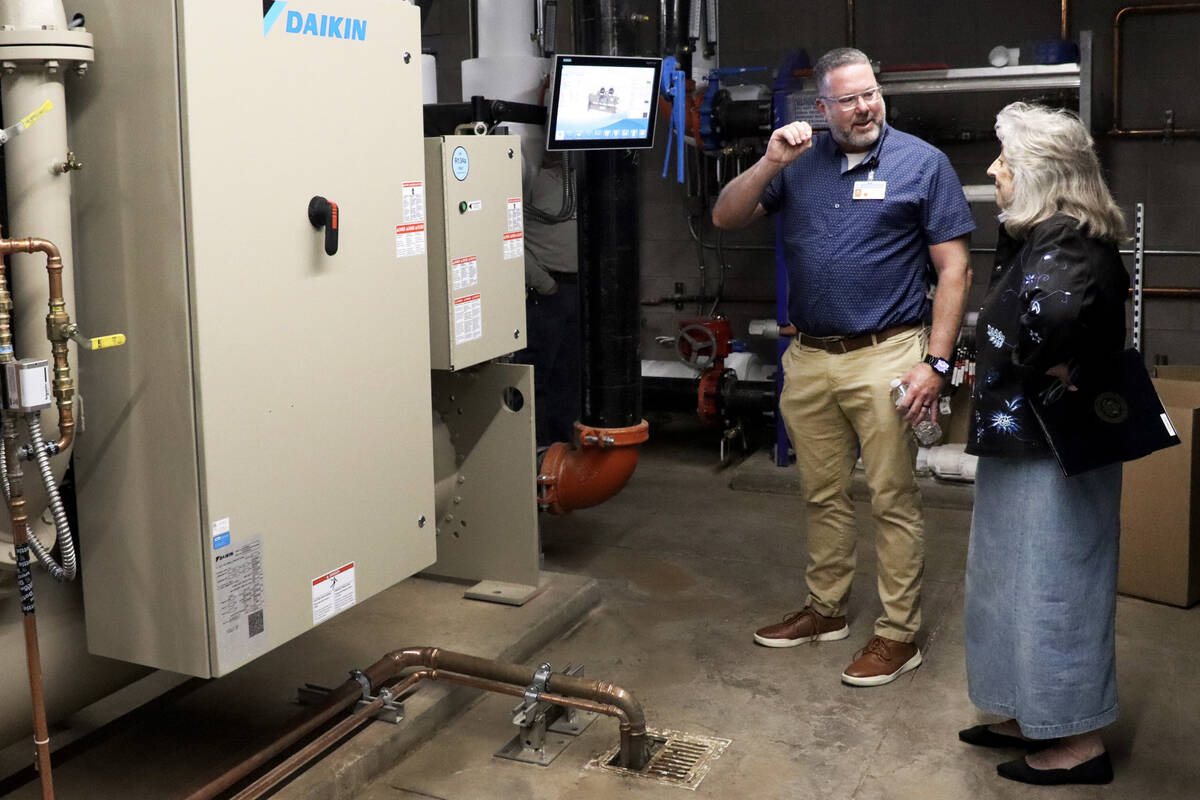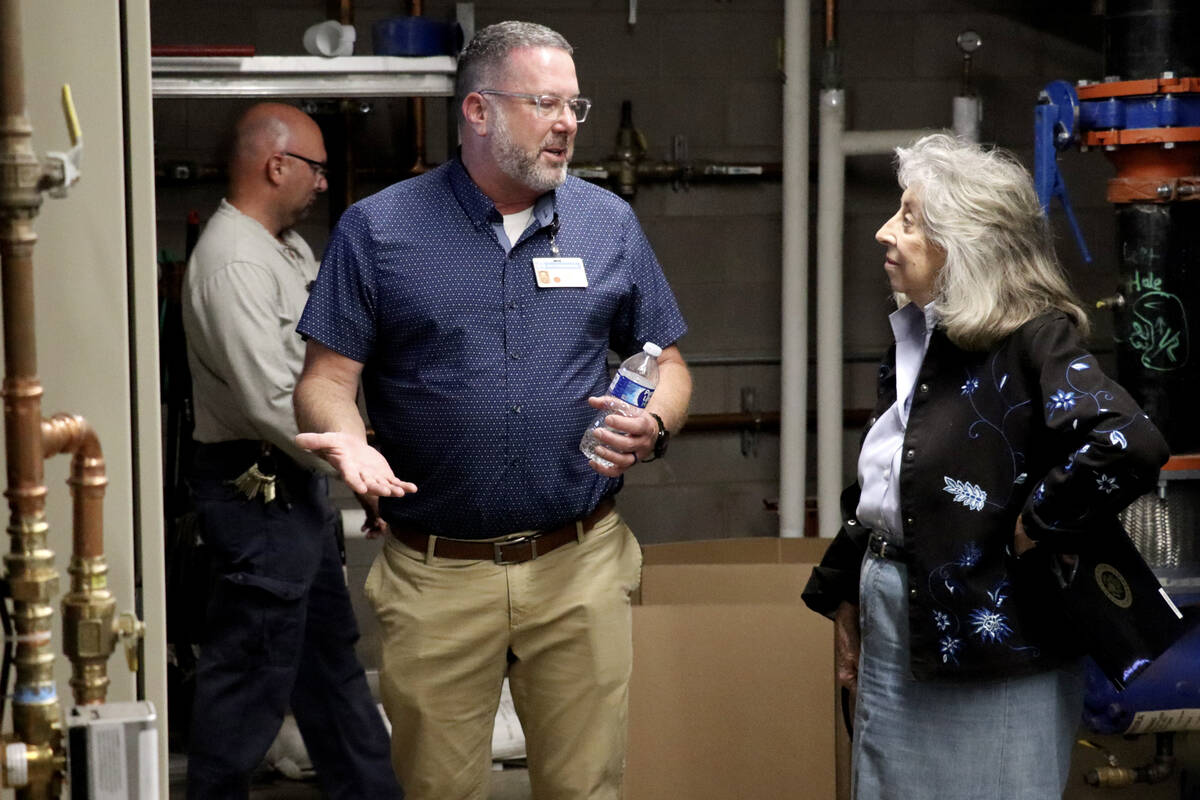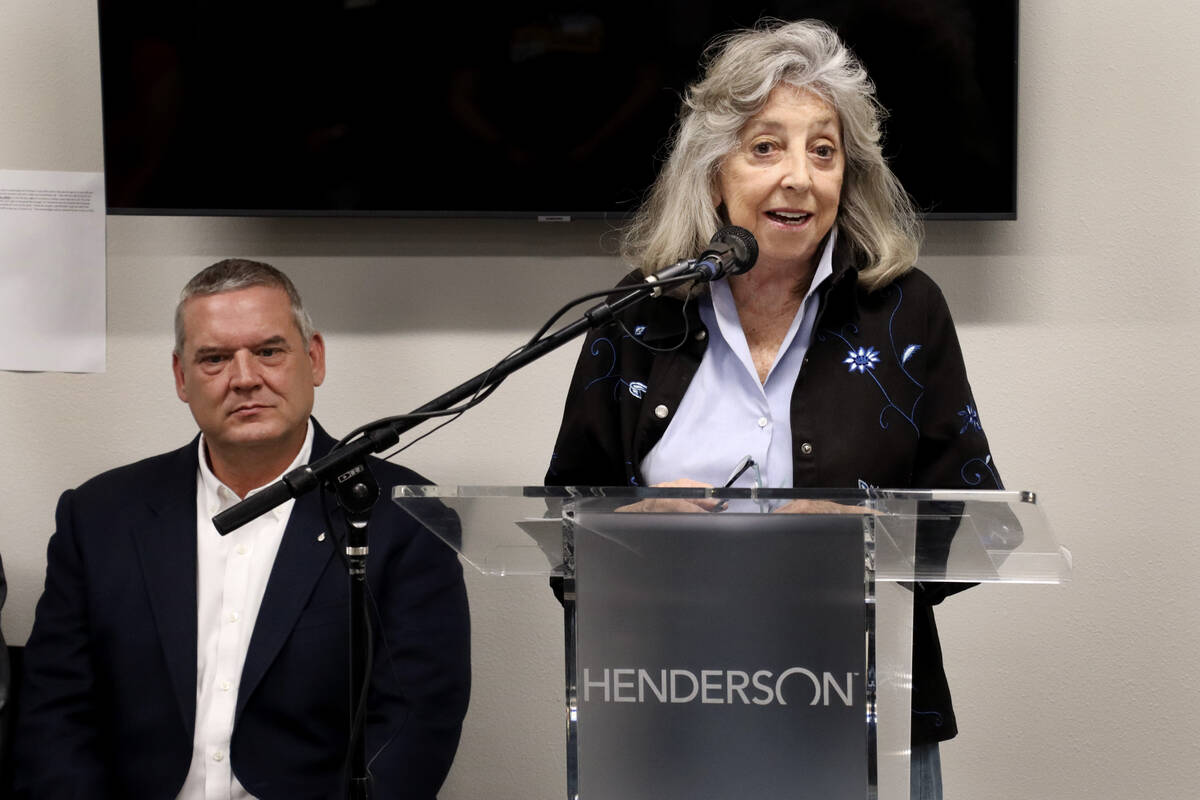Henderson expects big water savings from tackling this water waster
Pondering what wastes the most water in the Las Vegas Valley, residents might think of any number of features, from the dazzle of the Fountains of Bellagio to the green golf courses that stick out in the beige desert.
First and foremost, irrigating thirsty grass tops the list of wasteful water uses. But not far behind is a relatively unknown use that allows water to disappear into thin air: Water managers say that the way we’ve historically cooled off our buildings in the desert heat has a lot to do with the valley’s bottom line for water use.
“If we’re going to grow, it’s all of the above,” John Entsminger, Southern Nevada Water Authority general manager, told the Las Vegas Review-Journal. “One drop at a time.”
Rep. Dina Titus, D-Nev., joined Henderson and water authority officials Thursday for a tour of the new-and-improved cooling system inside the Henderson Multigenerational Complex, which features several pools and acts as a community recreation center.
The savings are impressive: By making the air conditioning system more water-efficient, Henderson will save 294,000 gallons of water every year. The conversion is made possible through the water authority’s program targeting evaporative cooling in the valley, with a potential reimbursement of up to $500,000 once a project is completed.
Locally, water use has declined significantly across Nevada because of conservation measures. Lake Mead and the Colorado River as a whole are experiencing historic shortages amid a climate-change-fueled drought that’s lasted more than two decades.
The Colorado River provides about 90 percent of Southern Nevada’s water.
Federal water mangers have said Nevada only used roughly 62 percent of its share of water from the river last year, far surpassing numbers from its neighbors in the Lower Basin, California and Arizona.
“Evaporative cooling uses the largest chunk of water of our allotment (of Colorado River water), and that’s nearly 10 percent,” Titus told reporters. “When you talk about getting rid of those, you really are talking about making a difference. And Henderson is spearheading that effort.”
While Las Vegans might not know much about evaporative cooling, this valley-wide initiative is years in the making.
Jerry Hagen, Henderson’s facilities operations manager, who has led the conversion effort, said the city is in the process of replacing 74 evaporative cooling units.
Not only does it contribute to the valley’s water savings, Hagen said, but the new system will cost Henderson less money to operate and will reduce stress on the power grid.
“This was double-sided, because we can conserve water and reduce maintenance costs,” Hagen said.
Entsminger, who has led the water authority’s conservation efforts for about a decade, said there was an initial hesitance among business owners when the agency decided to target evaporative cooling.
Though no new evaporative coolers are allowed to be installed, many Southern Nevadans who operate big buildings have voluntarily replaced theirs, he said. If the valley’s population and housing stock continues to snowball, Entsminger said, conversions like this are a necessary step forward to ensure there’s enough water to do so.
The water authority has staff available to assist anyone interested in learning about how to convert an evaporative cooling system, he said.
“Yes, we have to take out grass. Yes, we have to limit pool sizes,” Entsminger said, “But allowing new evaporative cooling is going to eventually have a direct impact on your ability to grow your business. It’s about making them understand their place in the value proposition of why this is important.”
Contact Alan at ahalaly@reviewjournal.com. Follow @AlanHalaly on X.




















